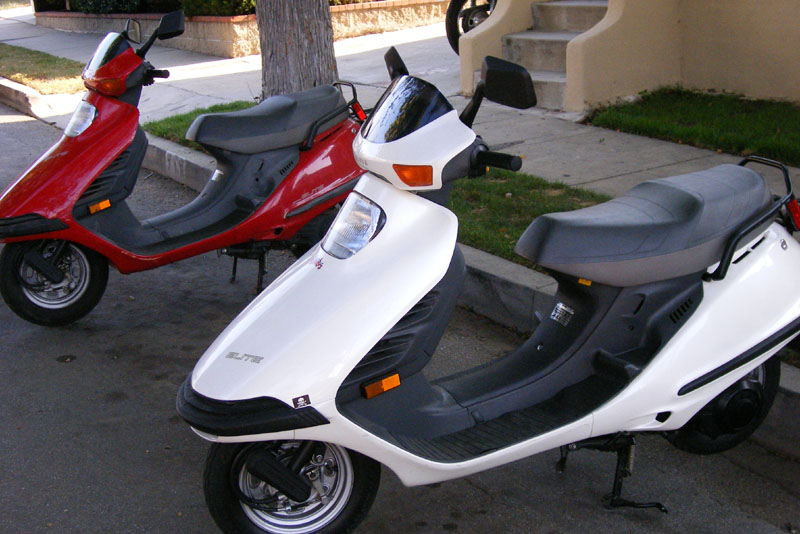Home Powered Wheels Mopeds & Scooters
Mopeds & Scooters
Mopeds
Mopeds typically have a step-through frame design, have an air-cooled 50cc engine or less, and have a top speed of just below 30 mph (or approximately 45 km/h).
Traditionally, mopeds also have pedals, like a bicycle, that are used for cranking the engine to start it; however, you could also pedal it to help it go up steep hills, etc.
Scooters
Scooters are normally faster than mopeds. They don’t have pedals like some mopeds do. Usually scooters have engines in the size range of 50cc to 150cc and can often reach speeds near 60 mph (95 km/h) depending on the model. There are more large engine choices available now and some models can even go faster than 60 mph.
Many scooters have electric start and most have the engine located near the rear wheel instead of between your feet like a traditional moped or motorcycle. The rear-engine location allows the step-through frame and extra room for your feet knees.
Frequently Asked Questions
How much do they cost?
You’ll need to do the math to figure out how much gas money you can save, but don’t forget to factor in fun. In general, a decent brand of moped now starts at around $1,000. (US dollars). Most good brands of scooters now start near $2,000. Maxi-scooters are about the same price as a regular motorcycle and are usually in the range of $6,000-$10,000.
What is the difference between a motorcycle and a moped (or a scooter)?
A moped has less than 50 cc engine displacement, less than 2 brake horsepower, and is capable of no more than 30 mph on a level surface. If it does not meet all three of the listed requirements, it is considered a motorcycle. A scooter may be either a moped or a motorcycle depending on its size. Riding a motorcycle requires a CY endorsement on your Michigan license. A properly registered moped can be ridden on the street by any licensed driver or anyone 15 years of age or older with a moped license.
Mopeds must be registered at a Secretary of State office unless operated solely on private property. A three-year registration decal costs $15 and is displayed on the back of your moped so it is visible to law enforcement officers. It expires April 30 in the year on the decal.
What roads can I normally ride on?
What speed will traffic be moving at? Is there room enough on your roads for you to be riding at a slower speed than traffic? If not, you probably should consider a scooter that can at least maintain the speed limit for your own safety.
How fast can I go?
If you are lucky enough to have a relatively short commute in slow moving traffic, or at least have roads that you would feel safe riding on or near the side if traffic is too fast to keep up with, then a moped could be a good option. Mopeds sometimes do not require any special license as long as they are only capable of reaching near 30 mph max; but you might need to register it to get a special moped tag or plate. You’ll need to check your local motor vehicle laws about this if you are planning for a moped. If going real slow is no problem, and you also have no steep hills to climb, then maybe a moped is probably a good choice for you.
Are there any larger size scooters to fit my size?
If you want to be able to handle highway speeds with ease, and are looking for more comfort than a regular scooter offers, then “maxi scooters” might just be what you need.
Where can I rent a scooter?
If you would like to give one a spin before you consider making a purchase contact Scooter Joes in St. Joseph
Information courtesy of MotorcycleInfo.org

